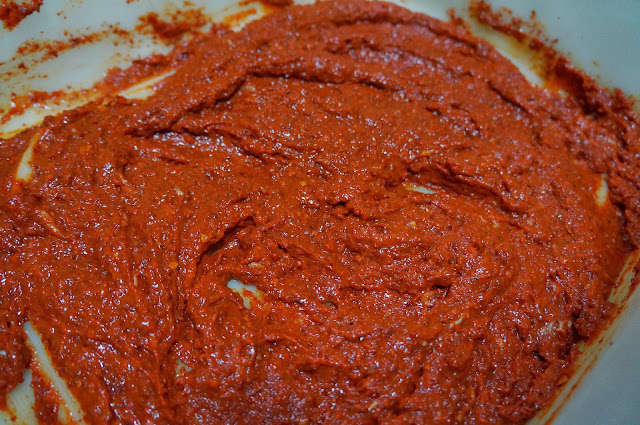In case you haven't heard, kimchi (sometimes spelled gimchi) is the most highly revered food in Korea. The fermented cabbage often turns up in soups, stews, as pancakes (think potato pancakes, not the breakfast kind), and on pizza, burgers, and sandwiches. I think it's great when grilled with pork, or fried with some eggs. It's eaten every day at every meal by every one. I've been told that some Koreans will even bring a stash of kimchi with them if they are travelling to another country (or even space). Basically, this stuff is more like a national treasure than a national dish.
Is it healthy?
The various health benefits of kimchi (like anything else) are widely debated but it seems like most studies agree that the stuff is loaded with vitamins and probiotics. While others fret over the levels of potentially dangerous carcinogens.
How does it taste?
Like anything else, the taste varies from place to place. Typically, I'd describe it as a spicy sauerkraut. I've had really spicy kimchi, mild kimchi, sweet kimchi with pine nuts (the best), good kimchi, great kimchi, not so good kimchi, not so bad kimchi, bad kimchi, terrible kimchi, average kimchi, kimchi fired shrimp, shrimp fried kimchi, grilled kimchi shrimp, sauteed shrimp and kimchi, shrimp burger with kimchi, kimchi burger with shrimp, lobster stuffed with shrimp and kimchi, kimchi stuffed with shrimp and lobster...
How's it made?
Excellent question! The ingredients are few: cabbage, garlic, radish, carrots, dried red pepper, dried anchovies, anchovy sauce, a jar of tiny shrimp (see below)...
 |
| Cabbage |
 |
| Daikon Radish |
 |
| Dried Anchovies, Anchovy Sauce, Jar O' Shrimp |
Now that we have everything we need, it's time to start the process. First, the cabbage needs to be soaked in brine for about 12 hours. Just dissolve some salt, (We learned with a Korean who has been doing this since she was a little girl. Nothing was measured with utensils.), into some water and pour it over the cabbage...which should be in a large bowl...now cover the bowl of salty cabbage and let it soak overnight.
Assuming that 12 hours have passed, drain and rinse the cabbage. Now the fun begins. Take your dried anchovies and boil them in water to make a stock. I forgot to mention that you'll also need some rice powder. The rice powder is boiled until it becomes a paste. I'm really not sure about measurements here...Ours had the consistency of Elmer's Glue when it was finished:
The above mixture and some of the stock...we used about 1/4 of it...will be mixed with the red pepper flakes, some anchovy sauce (basically use this to salt the mixture to taste), and 1/2 of the shrimp jar. To give you an idea of how much red pepper we used, here are some photos of the mixture:
Chop about 10 cloves of garlic and the 2 carrots and add them to the mixture. The final result will look something like this:
Now it's time to cover the cabbage. Cut each head of cabbage in half and use the red pepper mixture as a coating. Don't be afraid the rub the mixture into all of the nooks and crannies and don't forget to wear gloves, this stuff will stain your hands (and if you're anything like me, you'll somehow end up getting the mixture inside of the gloves and up your sleeves).
Slice the radish into thick circles and cover them with the red pepper paste as well. When you finish dousing your cabbage, fold it up into a little ball and place it in the special kimchi container.
After you finish with the radish and cabbages, pour some of the remaining sauce into the container. Slap a lid on that mess and stick it in your fridge for a month.
There you go. You should have enough kimchi to supplement long overland travel, office gatherings, baseball games, walks in the park, movie nights, game nights, deep sea exploration, intergalactic space travel...











No comments:
Post a Comment